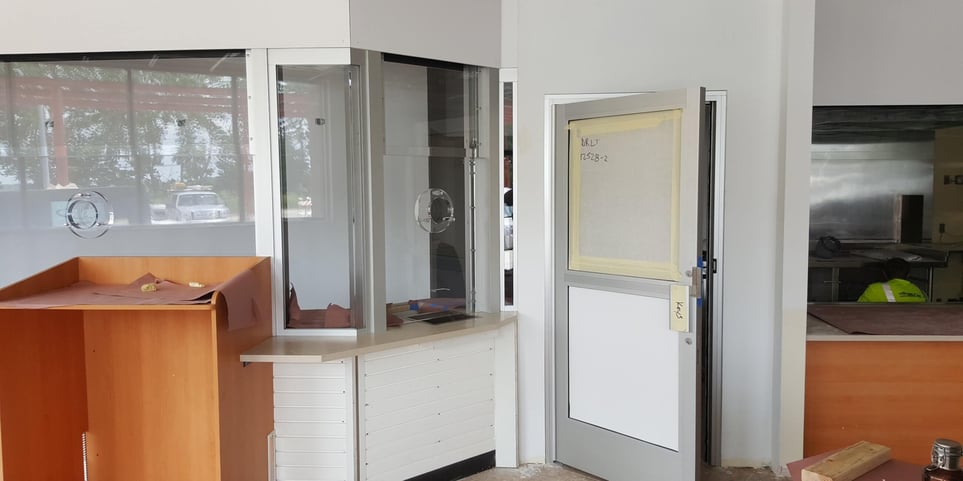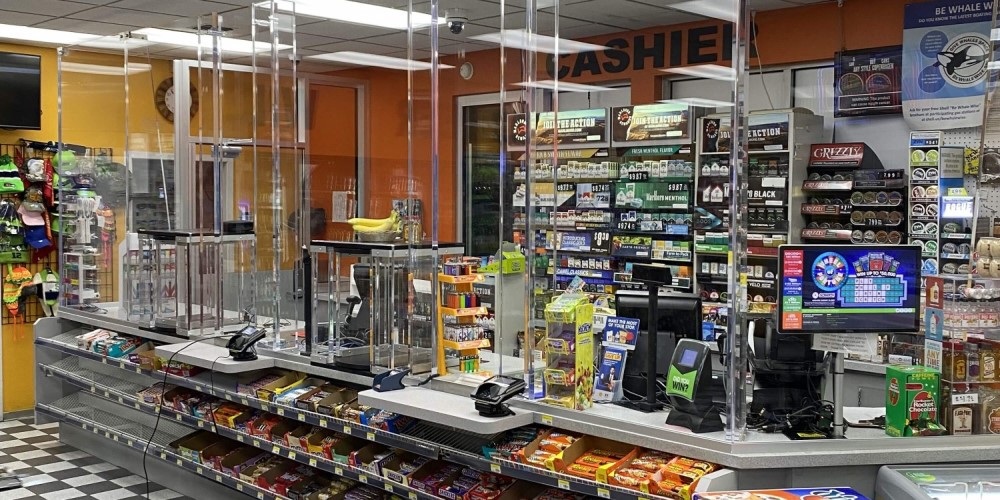When it comes to employee protection, convenience store security has long been a particular area of concern. Varying needs and evolving concerns present unique challenges, requiring business owners and security professionals to regularly assess the efficiency of existing safety designs. Whether you’re an architect planning a bullet-resistant barrier project or a contractor starting a project, here are a few things you should know before tackling retail physical security upgrades.
1. Plan Ahead
When planning a security project, it’s important to note that no singular item is going to be responsible for the safety of building occupants. Multiple components need to work together to achieve the desired protection level. We recommend taking a systems approach, focusing not only on ballistic glass, but also incorporating wall panels, doors, framing, and accessories into a cohesive bulletproof system. Considering the all-hazards approach to retail security, the concept of planning for multiple threats beyond just bullets, can also be beneficial in these early stages. While it is impractical to expect architects and glaziers to think of every possible contingency, there are still practical questions that should be asked, such as: “Will this bullet-resistant barrier make it difficult for employees to evacuate during a fire?”
2. Protection Levels
You should know what protection levels are common for retail applications. We discussed this in Retail Security: Frequently Asked Questions, sharing that a UL level 1-3 system is the most common in a retail setting, with level 1 typically being the most utilized. It is also essential to know the risk level for the location and type of business. A jewelry store in a busy metropolitan area, for example, will have a different threat level than a rural gas station. The weight and thickness of the materials increase with higher UL levels, so be sure to take this information into consideration as it will affect the design and construction of your bullet-resistant barrier.
3. Ballistic Solutions
Becoming familiar with common ballistic solutions will help you be more prepared for your next project. Options such as bandit barrier horizontal or vertical sliding windows provide another layer of customization. These sliding transaction windows can be kept open during the day and closed during higher-risk hours, allowing workers to adapt convenience store security to changing needs and trends. Baffle/Arch transaction windows offer ballistic and forced entry protection in the busiest of spaces, creating a safe environment for employees to interact with customers. Non-rated acrylic louvers can be implemented above the transaction windows to fill open space.
4. Accessories Provide Accessibility
Be aware of what accessories and elements can enhance customer service. Bullet-resistant package passers allow for items to be transferred between customers and staff without compromising security, and are available in several different options custom designed to suit your individual needs. Deal trays are useful in situations where funds are transacted and potentially vulnerable. They are available in a wide range of sizes to accommodate specific security concerns. Voice ports allow for natural voice transmission, providing safety to employees and adding to barrier aesthetics, without compromising quality customer service.
5. Proper Installation
It’s helpful to know who will be installing your security upgrades. Whether you decide to work with a general contractor, glazier, or with TSS’ own factory installers, proper installation is crucial to effective protection. All of our bullet-resistant systems ship with installation instructions, helping you to avoid costly time delays, and TSS designers and project managers are always happy to assist if any questions arise. It’s also worthwhile to be aware of the size and weight of the components involved—bulletproof glass, in particular, can weigh two to three times as much as standard tempered glass, making coordination difficult if your installers aren’t prepared.

TSS: Here to Assist
Nowadays, more business owners are taking retail security seriously. Not many architects and contractors are familiar with ballistic barriers, and design can be a bit tricky. Thankfully, TSS has been assisting architects for years, and because we custom fabricate each component for your project, installation is easy. Determine if your convenience store security plan is up-to-date by reading through our 6 Components of a Convenience Store Security Plan. If you have questions or want to get started with a specific project, contact our ballistic security experts today.

